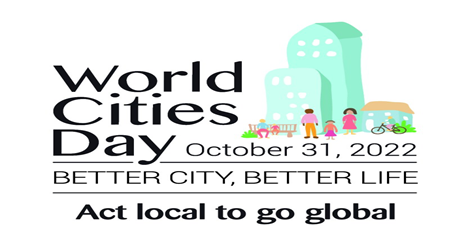World Cities Day
Context
Every year, October 31 is celebrated as the World Cities Day by the United Nations.
- The day promotes global urbanization, addresses challenges of urbanization, pushes for cooperation among countries for sustainable urban development.

History
- On December 27, 2013, the United Nations General Assembly (UNGA) established World Cities Day through a resolution.
- The first celebration took place on October 31, 2014.
- The second United Nations Conference on Human Settlements in 1976 influenced the UNGA’s decision to establish World Cities Day.
- The UN-Habitat programme, established the following year, promotes the development of sustainable cities in line with SDG 11 goals.
- The mission of SDG 11 is to “Make cities inclusive, safe, resilient and sustainable.”
- Local and regional governments need to be empowered to develop greener and more equitable cities.
- The United Nations launched the World Cities Report on the eve of World Cities Day celebrations.
- It conducts the annual Urban October programme for this purpose which begins on the first Monday of the month and ends on October 31, with World Cities Day.
Theme
- “Better City, Better Life” has been the general theme of World Cities Day since its inception.
- But each year, a sub-theme is also announced.
- The sub-theme this year is “Act Local to Go Global.”
- To reach the Sustainable Development Goals (SDG) 11 of the United Nations by 2030, local action is vital.
Significance
- Urbanisation is a marker of national economic growth.
- Such development, however, faces social, economic, demographic and environmental challenges.
- Some of the most visible challenges to rapid urbanisation are displacement of original inhabitants, felling of trees, animals losing their habitats, issues of healthcare, food supply and pollution.
- World Cities Day helps address these challenges by bringing together all stakeholders of local and global urban development.

